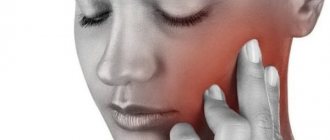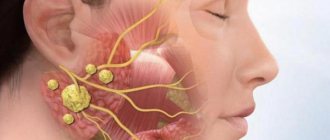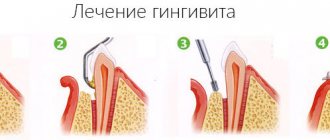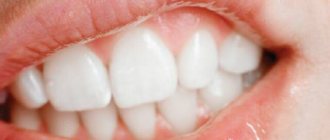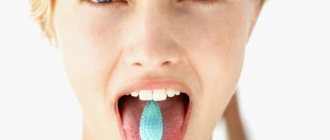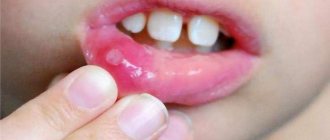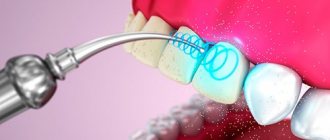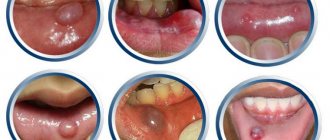How to treat the salivary gland at home? Using tinctures
In addition to modern traditional medicine, folk remedies help to gradually get rid of sialadenitis.
A variety of tinctures that are made independently from plant components have proven effective. To prepare the tincture at home, you need to take the following ingredients:
- wild raspberry root – 0.5 kg (it is recommended to collect the component before flowering and bud opening);
- young pine shoots – 1 kg;
- honey – 500 g;
- granulated sugar – 1 kg;
- water – 500 ml;
- alcohol or vodka.
You can find plant materials yourself among forest plantations or purchase a ready-made version. When all the components are prepared, you need to grind the raspberry root to medium-sized granules. Next, boil water, immediately pour in the pine shoots, allowing the mixture to brew for 4 hours.
After time, add raspberry root, honey, and sugar. Place the bowl with the tincture in a water bath and simmer over low heat for 8 hours. As soon as the mass is ready, it is poured into a glass jar and left to infuse for 2 days in a dark place.
The infused mass is filtered through cheesecloth or a fine sieve, without discarding the remainder. The strained mixture is diluted with alcohol or vodka in a ratio of 1:10. The remains are also poured with alcohol until the liquid completely covers the mass. Close and leave for a month, just like the strained composition.
The prepared tinctures must be mixed and a solution of 1 tbsp taken. three times a day. If you do this half an hour before meals, the composition will be absorbed better. The course of treatment lasts 10 days.
If you plan to take the tincture for preventive purposes, it is recommended to do this in the fall or spring, when the body experiences a lack of vitamins.
In another topic: inflammation of the salivary gland in a child. A detailed analysis of the symptoms of the disease in children - from mumps and mumps to acute nonspecific sialadenitis.
For information on edentulous diseases in children, see here.
Read about the treatment of wedge-shaped dental defects here.
Why do the salivary glands become inflamed?
Viruses enter our body in large quantities - this is one of the common reasons why such diseases appear. Pathogens enter our body hematogenously, through various ducts.
The inflammation usually affects the glands that are located near the ears. Mumps is what diseases under such conditions are called. This occurs due to the fact that an infection enters the body through the blood, lymph or saliva. Foreign objects, such as stones, also end up in the flowing parts of the glands. Now we should consider in more detail why exactly inflammation of the salivary glands occurs. Symptoms, photos, treatment - all this information is presented in detail on our website.
How to treat inflammation of the salivary gland
Therapeutic compresses
External compresses and lotions also help in treating the salivary glands at home. They are applied from the outside to the jaw area. It’s easy to make a mixture for compresses yourself.
There are several recipes for poultices and lotions for sialadenitis:
- Homemade cottage cheese. You need to take a little product and bring it to room temperature. After this, prepare gauze or a napkin in which to wrap a handful of cottage cheese. Apply the mixture to the swollen gland for 1 hour. The procedure must be repeated 3 times a day, regularly changing the product to a new one. This cannot be said to be an effective remedy, but it also has its uses.
- Celandine. For 3 tbsp. dry plant you will need 300 ml of boiling water, which you need to pour over the grass. Place the mixture on the fire and simmer for 30 minutes. After this, remove the mixture from the stove and let it brew in a bowl for about 3 hours. Moisten the bandage in the prepared solution and apply to the problem area several times a day for 60 minutes.
- Carrot. Grate it, put it on cheesecloth, squeeze out the juice. Wet the tampon and apply it to the gland 5 times a day. Another remedy is considered more effective when pharmaceutical hemlock tincture is added to the juice.
- Celandine roots, St. John's wort, yarrow. The last two ingredients are taken in 50 g, celandine roots need 300 g. The mixed composition is poured with a bottle of vodka, and left to infuse for a week in a jar. As soon as the medicine is ready, it is used for compresses.
These compositions cannot be used if the inflammation is complicated by purulent processes.
Herbal decoctions
You can brew herbal ingredients not only for oral administration, but also for rinsing. Oral administration helps in the presence of severe inflammation, when the medicine is required to work from the inside. Rinsing will help eliminate swelling of the oral cavity.
Below are herbal recipes for the treatment of sialadenitis:
- You need to take chamomile, sage and eucalyptus in equal proportions and pour boiling water over it. Let stand for 30 minutes, then strain and rinse your mouth at least 3 times. Chamomile has an anti-inflammatory effect, sage has restorative properties for the epithelium, and eucalyptus refreshes and relieves pain.
- Veronica, elderberry and peppermint are purchased in equal quantities and also brewed with boiling water. It is necessary to infuse the decoction for about an hour, then strain and take for rinsing. Veronica promotes the healing of small ulcers, elderberry is used to relieve the inflammatory reaction of the oral mucosa, and peppermint acts as an antiseptic.
- Crushed viburnum bark is mixed with yarrow leaves, added to boiling water and boiled for 10 minutes over low heat. The resulting composition is infused under the lid for 20 minutes, then used to rinse the mouth. Viburnum acts as a vasoconstrictor and hemostatic agent. Yarrow herb contains essential oils and can eliminate inflammation.
Before using decoctions for rinsing, they must be filtered and cooled.
Products for external use
Ointment recipes are based on the use of components of plant and animal origin. To increase the effectiveness of treatment, it is recommended to apply special gauze dressings after applying the compositions. They will additionally provide warmth and promote rapid absorption of beneficial properties.
To treat inflammation of the salivary gland, the following external agents are used:
- Vaseline and birch tar in proportions of 1:10 are thoroughly mixed and applied to the swollen area of the jaw and neck three times a day;
- 20 g of camphor and 100 g of regular pork fat are mixed and applied on a bandage to the salivary gland, providing warmth;
- melted pork fat is mixed with a decoction of celandine and St. John's wort until the lumps disappear, after which the affected area is lubricated;
- 1 chicken yolk, 1 tbsp. wheat flour, 1 tbsp. honey and half a teaspoon of vegetable oil are necessary to make an effective ointment - after bringing the composition to dissolution over low heat, it is applied on a bandage to the swollen area.
Read also: What not to do after brushing your teeth
You can use these recipes for preventive purposes if you feel discomfort in the salivary gland. You should not use ointments if you have an acute form of inflammation.
It is known that Air Flow teeth brushing is a procedure that helps to brighten teeth and remove plaque and tartar that daily use toothpastes can no longer cope with.
Read about the cost of the Air Flow teeth cleaning service in this article.
Other traditional medicine recipes
Among other treatment options with folk remedies, experts recommend sometimes using sour candies. This move will help remove stones from the gland by driving away saliva. Another effective method is massage of the parotid area. It must be carried out carefully, without pressing on the gland.
The following traditional medicine recipes are widely used:
- rinsing with a solution of water and salt in proportions of 1 tsp. for 200 ml of liquid;
- crushed propolis, filled with vodka, infused for 10 days, after which it is diluted with water and consumed 40 drops per day;
- mixed finely chopped garlic with 100 ml. warm vegetable oil is used for internal treatment of the oral cavity using tampons.
These proven recipes act as aids in the prescribed conservative treatment. They are also important to use in the chronic form of the disease or for the prevention and strengthening of the walls of the oral cavity.
Symptoms
The patient usually does not notice the formation of a stone in the parenchyma until it completely blocks the duct. After this, painful sensations may occur, acute, but in the form of short-term attacks - the so-called. salivary colic. The attack can last about 20 minutes.
Symptoms of stones in the salivary gland vary depending on the nature of the disease - whether it is acute or chronic. The acute form involves severe pain, attacks of colic, as well as the following symptoms and consequences:
- a feeling of fullness in the part of the oral cavity where the stone has formed;
- frequent pain when eating;
- unpleasant taste in the mouth;
- the appearance of an abscess or phlegmon in the oral cavity;
- pain on pressure and/or palpation;
- increase in body temperature to 37.5 degrees;
- general weakness;
- headache;
- opening of the entrance to the salivary canal with discharge of pus from the opening;
- very small amount of saliva, dry mucous membranes.
With sialolithiasis, it is painful to move the jaw while eating. It is painful to swallow, and the pain radiates to the ear or temple area, as well as to the throat and tongue (with sialolithiasis of the submandibular gland).
Please note: the acute form of the disease can develop within a few hours. Particularly severe pain occurs if the stone moves out of the gland into the soft tissue on its own.
In the chronic form, a stone in the duct of the salivary gland may not reveal itself in any way, except for the following signs: swelling of the neck and face, constant tension of the facial muscles, as well as swelling in the area of the affected gland, caused by the fact that it increases in size. Pain as a symptom in the chronic form may be mild or not appear at all.
Inflammation of the salivary glands: treatment at home
Pain in the ears or throat can occur due to inflammation of the salivary glands; treatment at home is acceptable if it is mild and without complications.
Attempts at self-medication threaten to result in serious problems, so you should not experiment with your own health. Drugs and methods of therapy should be prescribed only by the attending medical specialist.
Which doctor treats inflammation of the salivary gland
Depending on age, concomitant disorders and cause, sialadenitis can be detected by different specialists.
Which doctor you contact depends on the cause and manifestations of the disease:
- pediatrician (if the child is sick);
- rheumatologist;
- infectious disease specialist;
- surgeon;
- phthisiatrician;
- dentist;
- venereologist.
The treatment will be carried out by a dentist, an oral surgeon, and an infectious disease specialist. When sialadenitis occurs against the background of systemic pathologies, the patient is also managed by a specialized doctor, depending on the underlying disease.
Conservative treatment at home
Inflammation of the salivary gland is called sialadenitis and occurs, most often, due to exposure to infection. Pathology can occur in acute or chronic form. In the most severe cases, therapy is carried out in a hospital setting. If a person consults a doctor at the first symptoms of deterioration in well-being, then sialadenitis can be eliminated using conservative methods, with the indispensable use of physiotherapy and traditional medicine.
- rid a person of the underlying pathology against which sialadenitis arose;
- suppress the activity of viruses and bacteria;
- stop the spread of infection;
- relieve pain, swelling and redness of inflamed areas;
- relieve discomfort when eating, talking and performing oral hygiene procedures.
Conservative methods of combating sialadenitis include:
- the use of antiviral, antimicrobial and antimycotic drugs, depending on the type of infection;
- a diet with plenty of acidic foods to stimulate salivation;
- exposure to medical antiseptics on the affected area; potassium dioxidin and furagin are well suited for these purposes;
- the use of general strengthening agents to improve immune status;
- novocaine-penicillin blockade when accelerating inflammation;
- physiotherapy sessions;
- compresses with 30% dimexide (once a day for 30 minutes);
- painkillers.
Read about postpartum thyroiditis here.
About euthyroid goiter, see here.
The diet for inflammation of the salivary glands should be balanced. The food is finely ground so as not to injure the oral mucosa.
To stimulate salivation, the diet should contain acidic foods: cabbage, lemon, cranberries. In addition to everything, they will replenish the body with vitamin C. The work of the salivary glands will become more active if you take 5 drops of pilocarpine hydrochloric acid solution orally. It enhances muscle reflexion of ductal channels and promotes the production of salivary secretion.
Types and forms of sialadenitis
Depending on the method of infection, sialadenitis is divided into:
- Viral - enters the body by airborne droplets and after the incubation period, due to penetration into the tissue of the salivary gland, causes its inflammation, actively multiplying in the cells. Children aged 3 to 15 years are most often affected.
- Bacterial. It develops when bacteria enter from the oral cavity - through the ducts of the glands, as well as from the inside - through the blood and lymph.
Article on the topic:
Elevated leukocytes in the blood of women - causes and consequences
Most patients suffer from inflammation of the parotid and submandibular areas. Problems with the salivary ducts under the tongue occur much less frequently. Usually appear against the background of phlegmon or abscess.
Physiotherapy
Physiotherapeutic methods for treating inflammation in the neck and maxillofacial area affect the cause of the process and help sanitize the affected area.
In the acute stage of sialoadenitis, provided that the functionality of the excretory duct is preserved, physiotherapy is used as part of a set of measures, along with the use of general and local sialotropic drugs.
The most effective are:
- ultraviolet irradiation of the area of the affected salivary gland, the course includes 4-5 procedures, which are performed two days later on the third;
- fluctuarization (pulse current treatment) of the site of suppuration, a course of 8-10 procedures.
After the inflammation is stopped, it is important that the source of infiltration resolves.
For this purpose they prescribe:
- exposure of the pathological focus to infrared rays (10-12 procedures);
- ultrasound (8-10 sessions);
- electrophoresis with a solution of 3% potassium iodide (10-12 times).
To relieve pain and enhance the antiallergic effect, you can use a laser method of physiotherapy, using a focused or defocused beam (8-10 sessions).
Treatment with folk remedies
Traditional medicine helps to cope with many problems when the body malfunctions.
There are tried and true recipes for fighting inflammation:
- Treating the oral cavity with a solution of baking soda. Pour one tablespoon of this powder into a glass of warm boiled water. Soak a large cotton swab in the solution and treat the oral cavity with it. The procedure can be repeated several times a day. Spit out the soda solution after treatment.
- Gargles with eucalyptus oil. Add two large spoons of aromatic oil to a glass of lukewarm boiled water. Mix and use as a mouth rinse 3-4 times a day.
- Treatment with pine needles. Pour 5 tablespoons of fresh needles of any “Christmas tree” into a liter of boiling water. Simmer for 30 minutes over low heat. Set aside and let cool. Drink 2 tablespoons twice a day.
- Rinsing with a decoction of eryngium herb. Mix a large pinch of dry plant purchased at a pharmacy with a glass of just boiled water. Infuse and use to rinse your mouth and throat for two hours.
Read also: Wound healing after tooth extraction
Inflammations of the salivary glands are well treated with herbal preparations, which can be used not only for treating the mucous membrane, but also for inhalation.
It is recommended to use the following combinations of medicinal herbs:
- speedwell and elderflower flowers with peppermint;
- immortelle (flowers) with raspberries and horsetail;
- chamomile, sage and eucalyptus leaves.
Read about the dangers and risks when anti-TPO is elevated in this article.
If for some reason it is not possible to brew herbs, you can use ready-made pharmaceutical preparations. Such, for example, as rotokan. This is an alcohol tincture containing extracts of chamomile, yarrow and calendula. It is used not only for sialadenitis, but also as a remedy for stomatitis, tonsillitis and other problems of the mouth and throat.
The rinse solution is made in a glass of warm boiled water, with the addition of a teaspoon of extract.
If the drug is well tolerated and does not cause allergic reactions, you can increase the concentration of the solution by adding two or even three instead of one spoon of the product. Rinse your mouth four times a day.
Rotocan can also be used in the form of an application. To do this, soak a cotton pad in the extract and apply it to the inflamed area in the mouth for 15 minutes. One procedure per day will be enough.
Treatment of the mucous membrane and rinsing is used after meals, some time later. Before using herbal remedies, it is necessary to disinfect the oral cavity with a soda solution.
Sialadenitis, like all other pathologies, is best treated at the very beginning.
It is important not to miss the signs that indicate a problem:
- swelling in the parotid or submandibular area;
- “shooting” pain radiating to the ear;
- fever and general malaise;
- difficulty and pain when swallowing.
If the listed symptoms are detected, you should immediately contact the dentist at your nearest clinic.
Diagnostics
Salivary stone disease must be differentiated from other diseases of the oral cavity that cause similar symptoms (fever, pain when swallowing, swelling). It can be:
- various tumors of the oral cavity;
- perimaxillary phlegmon;
- lymphadenitis;
- abscess.
Diagnosis of a stone in the duct of the salivary gland is carried out by a dentist, or in the absence of one, by a general practitioner. The first stage is visual inspection and palpation - in some cases the stone can be seen or its location can be determined by palpation. The gaping salivary canal and the pus secreted from it can be visually detected.
If it is not possible to visually detect a stone, then diagnostic methods will depend on the form and stage of the disease. The most frequently ordered studies :
- radiography;
- sialography;
- sialoscopy;
- Ultrasound of the salivary glands;
- biochemical analysis;
- CT scan.
The choice of a specific set of research and diagnostic measures remains at the discretion of the doctor. Much depends on the location of the salivolite, the speed with which the data needs to be obtained, the required accuracy and the diagnosis of possible concomitant diseases.
So, if the disease is chronic and there is no pain, then the doctor can use a special probe to examine the salivary canal, determine the size of the mouth and the depth of the salivitis. If the stage is acute, then most often a complex of diagnostic tools is used: X-ray and sialography (contrast X-ray), as well as ultrasound. In more complex cases, if an x-ray is of little help, a computed tomograph comes into play.
To establish the nature of the inflammatory process, a saliva cytogram is used, as well as a general biochemical analysis.
The average cost of an ultrasound of the salivary glands in Moscow is 1200 rubles, an x-ray of the oral cavity is 1250 rubles.
General concept of treatment and prevention
Most doctors, after a detailed examination and diagnosis, prescribe a number of medications, the action of which is aimed at eliminating the symptoms of inflammation of the salivary gland, but at the same time they do not resist the patient’s desire to be additionally treated at home using unconventional methods and folk remedies.
As auxiliary therapeutic measures, it is useful to use various herbal decoctions, juices, and fruit drinks.
When treating sialadenitis, drink plenty of fluids, and it is better if it is fortified.
In addition to all therapeutic measures, the patient is recommended to adhere to a special diet, which will be aimed at stimulating salivary outflow from the inflamed organ.
It is best to eat acidic foods and drinks. You can take a slice of lemon and dissolve it in your mouth, or use chewing gum. This promotes salivation very well, and along with it, pathogenic microorganisms will also be eliminated from the body faster.
All recommendations given by the attending physician must be strictly followed to avoid complications with the formation of pus in the sinuses.
As preventative measures, it is necessary to adhere to simple preventive measures:
- regularly carry out wet cleaning with mandatory ventilation of the room;
- systematic daily procedures for maintaining oral hygiene, including cleaning the gums and tongue;
- give up harmful foods such as chips, crackers, sucking candies, which can damage the mucous membrane;
- strengthening general immunity;
- during the cold season, take immunomodulators and multivitamins;
- If suspicious symptoms appear, do not resort to self-medication.
Where are the salivary glands located?
There are three such paired organs:
- submandibular;
- located under the tongue;
- located near the ears.
Thanks to these parts of the body, up to two liters of oral fluid are produced per day. It is needed to prevent pathogenic microorganisms from entering our body. It also helps moisturize the oral cavity from the inside. In addition, it is this liquid that breaks down more complex carbohydrates into simple ones and promotes the elimination of medications.
Those located near the ears are also glands responsible for internal secretion. This means that they become active participants in protein and mineral metabolism in the body. And all thanks to the fact that they contain a hormone-like substance - parotonin.
Inflammation of the salivary gland symptoms treatment at home
Saliva itself performs several important functions.
- Lysozyme helps increase the body's resistance to infections.
- Helps improve the perception of tastes.
- Thanks to this part of the body, lumps of food move faster further down the throat.
- Promotes correct articulation.
Oral fluid consists of proteins. It contains 60 types of enzymes, including immunoglobulins, glycoproteins, mucin and amylase. Phosphatase is another important component of salivary fluid. This element plays an important role in the exchange of calcium and phosphorus in the body. In addition, it helps in the mineralization of all bones, particularly teeth.
For the composition of saliva, not only the qualitative factor is important, but also the quantitative ratio. If there is too little of it, then inflammatory processes are activated in the oral cavity. Carious lesions of teeth also begin. Among the equally serious consequences is demineralization of tooth enamel. If there is too much saliva, the body becomes dehydrated and exhausted.
The human mouth contains not only large glands, but also glands for secreting saliva with a smaller size and in large quantities. They are grouped on the surface of the hard and soft palate, cheeks, lips and tongue. Sialadenitis is one of the diseases that occurs when inflammation of the salivary gland begins. Symptoms, treatment at home, photos - all this information is presented on our website.
ethnoscience
Inflammation of the salivary glands is one of those diseases for which patients often practice treatment with folk remedies. For this, various medicinal plants are used: roots, herbs, berries. Aromatherapy, which uses essential oils, also helps to cope with the inflammatory process.
Using tinctures
- Hemlock tincture , has a good effect . The first day is to start with one drop one hour before breakfast. Then repeat the procedure at 15.00 and 21.00, three hours after meals. And so every day increase the amount of tincture by one drop until there are 30 of them. After this, the countdown begins, every day the amount of tincture should decrease by one drop. The treatment course lasts three months, followed by a five-day break, and again according to the same scheme.
- Take celandine roots - 300 g (pass through a meat grinder), St. John's wort flowers - 50 g, yarrow - 50 g . Mix all ingredients, pour vodka (0.7 l). Leave at room temperature in a dark place for one week. After infusion, strain and you can apply compresses with the resulting liquid.
Therapeutic compresses
The use of some compresses is allowed in the treatment of inflamed salivary glands, but in the presence of purulent formations they are contraindicated.
The most effective compress recipes:
- Homemade cottage cheese . The product should be spread evenly over a gauze napkin. Apply to the swollen area for 1 hour. Cottage cheese must be taken fresh every day.
- Celandine . Take 300 ml boiling water and pour it into 3 tablespoons of the dried plant. Place on low heat, boil, remove and leave for 3 hours. Moisten a gauze pad in the resulting broth and apply to the swollen area.
- Urine . Urine must be taken five days ago. Evaporate the contents until 1/4 of the total volume remains. The compress is applied at night.
- Hemlock tincture and grated carrots . You need to take the same amount of components and mix well. The bandage is applied to the swollen area three times a day. A good addition would be carrot juice, which you should drink two cups a day. You can simply make bandages soaked in carrot juice.
Read also: Soda saline solution for rinsing teeth
Herbal decoctions
Decoctions of medicinal herbs stimulate salivary production, thereby accelerating the elimination of pathogenic microorganisms:
- mint enhances salivation, relieves pain, freshens breath;
- chamomile has an anti-inflammatory effect, relieves swelling;
- raspberry leaves promote wound healing and have an anti-inflammatory effect;
- immortelle flowers, horsetail, raspberries are used as rinses daily;
- Veronica flowers, elderberry flowers, peppermint - rinse with the help of the collection, also used for inhalation, thanks to the essential peppermint oil;
- chamomile, eucalyptus, sage leaves - gargle with the decoction daily.
Each of the proposed collections contains medicinal plants that are not capable of causing harm to the body. But before using any of them, it is still better to consult a specialist.
Products for external use
The most effective recipes:
- Mix camphor powder (20 g) with pork fat (rendered, not salted, 100 g). Apply the resulting product to the bandage and apply to the inflamed area, leave for a couple of hours.
- Sift the birch ash well. Combine ash (1 tablespoon) with birch tar (3 tablespoons). Apply to the inflamed gland twice a day for three months.
- Take 1 to 10 Vaseline with birch tar. Mix well and smear the swollen area several times a day.
- Vaseline (40 g), celandine (ground to powder, 10 g), carrot juice (10 ml). Mix everything and apply to the swelling three times a day.
- Combine a decoction of celandine or St. John's wort with melted pork fat.
- 1 yolk, flour - 1 tbsp, honey - 1 tbsp, vegetable oil - 1/2 tsp. Mix everything well and put on low heat until thickened. Place the ointment on a gauze pad and apply it to the swollen area.
Other traditional medicine recipes
If the salivary gland is inflamed, and there is no opportunity (or desire) to see a doctor, then at home you can try one of the following recipes:
- Propolis . Crushed propolis - 20 g, pour alcohol - 500 ml. Shake for half an hour, put in a dark room for 10 days. Strain and drink 20 drops (dilute with water - 100 ml) the first day, and then drink 40 drops three times a day.
- Propolis, mumiyo . Place the mummy under the tongue three times a day for 1.5 months. After this, three times a day, chewing for a long time, take 3-5 grams of propolis for no longer than 1 month.
- Garlic and sunflower oil . Boil 100 ml vegetable oil, let cool, mix with chopped garlic. Leave for 1 week, then strain. Used to lubricate the oral cavity. Can also be used as nasal drops, instilling 5 drops. You can put cotton swabs in your ears.
Inflammation of the parotid salivary gland
In modern dentistry, not only teeth are treated, but various inflammatory processes that occur in the oral cavity. Among the most common phenomena are problems with the salivary glands.
Inflammation of the parotid salivary gland or parotitis is a disease that in most cases occurs due to the development of infection in the body.
Bacteria penetrate the gland through its main ducts, and the infection process can be lymphogenous, special hematogenous, and the most common - contact.
Signs of the disease
The pathology is associated with the characteristics of a functional disorder in the process of salivary separation. It is not difficult to determine it, since the patient is faced with pronounced characteristic symptoms:
- Shooting pains in the area of the gland itself;
- Tumor formation;
- Heat;
- Difficulty swallowing and breathing;
- Hyperemia in the affected area;
- Palpable infiltrate;
- Dry mouth.
If primary symptoms are detected, you should immediately contact a specialist. Different specialized doctors can identify and accurately diagnose diseases. It all depends on the age of the patient, the cause of the pathology, and concomitant diseases.
Important! In the complete absence of treatment or when it is neglected, there is a risk of developing purulent complications. The patient develops an abscess, the temperature rises, and the general condition worsens significantly. The abscess can break into the inside of the oral cavity, and a fistula can also appear on the surface of the skin.
What to do at home?
If the very first signs of the disease are present, it is necessary to take simple but very effective measures that will help avoid various complications. This way you can protect yourself from various pathologies, which will then only need to be treated through surgery.
There have been many cases recorded in medicine where careless treatment of one’s health led to a severe tumor developing in the area of the gland and requiring it to be opened surgically to release the pus. In addition, the patient was prescribed long-term antibiotic therapy.
To avoid such problems, you should follow the following tips and follow them until the time of visiting the doctor. These are these simple rules:
- Strict bed rest is required.
- It is important to establish a balanced diet.
- It is advisable to grind food before eating, since the patient often experiences severe discomfort during chewing and swallowing.
- To avoid intoxication of the body, you need to drink plenty of fluids - fruit drinks, juices and decoctions.
- Dry, warm bandages and compresses based on alcohol and camphor should be applied to the site of inflammation.
It is worth following a special salivary diet to ensure a constant flow of saliva. For this purpose, patients need to hold a small piece of lemon in their mouth for a couple of minutes before eating.
It is also recommended to eat crackers, cranberries, and sauerkraut. Doctors often prescribe drugs that stimulate salivation, for example, a 1% solution of pilocarpine. This is an ideal opportunity to eliminate stagnation of saliva in the gland.
It will leave the ducts, taking bacteria and dead cells with it.
To reduce fever and acute pain, it is allowed to take anti-inflammatory non-steroidal drugs - Baralgin, Ibuprofen and Pentalgin. They have an effective antipyretic, analgesic effect and effectively reduce inflammation. If such therapy does not produce a positive result, you do not need to wait for your appointment, but immediately contact a professional.
Basic rules of treatment
Treatment of pathology should be carried out exclusively by a specialist. At home, you can provide yourself with only the most basic help, aimed at alleviating the condition and preventing the serious development of the problem. If you start treating diseases in a timely manner, it will be possible to manage with conservative methods on an outpatient basis.
If simple home therapy does not produce any results, the doctor will prescribe a special antibacterial treatment system. After the acute inflammation has resolved, specialized surgical intervention will be performed. A professional will open the tumor and drain the salivary gland, which is especially effective when a large amount of pus accumulates in the gland.
After cleansing the gland, special antibacterial drugs are introduced into the ducts.
Important! Treatment of chronic inflammation of the parotid salivary gland is a long-term and rather complex process. Not only a professional approach is required, but also regularity, systematicity and strict adherence to the specialist’s instructions.
With a timely visit to the doctor, it is quite possible to do without surgical intervention. After the examination, the specialist will send the patient home, prescribing traditional methods of treatment. This type of therapy takes a little longer, but produces a fairly lasting positive effect.
Treatment with traditional methods
Inflammation of the parotid salivary gland and its symptoms are quite easily and simply relieved by treatment with folk remedies.
They, like medications, must be prescribed by a specialist who will rely on the examination performed. Treatment methods directly depend on the degree of development and general etiology of the disease.
Therapy can be based on the use of compresses, ointments and special products.
Compresses for inflammation
Here are some effective recipes for making compresses that quickly give a positive effect:
- Pour three tablespoons of dry celandine into a container and pour 300 ml of boiling water over them. Everything is brought to a boil, removed from the stove and infused for three hours. Gauze is moistened in the resulting infusion and applied to the swollen area for about an hour. This procedure can be carried out 3-4 times a day.
- You need to put a little fresh cottage cheese on a napkin and apply it to the site of inflammation 3-4 times a day, first changing the cottage cheese.
- It is necessary to carefully grind 300 grams of celandine, 50 grams of St. John's wort and the same amount of yarrow. All this is poured with vodka and after three days of infusion, it is applied in the form of a compress.
To obtain a positive effect more quickly, it is worth combining the use of compresses with self-made ointments.
Medicinal ointments
Here are a few recipes for medicinal ointments that need to be applied several times to the area of inflammation:
- 100 grams of rendered pork fat is mixed with 20 grams of camphor. The mixture is applied to the swollen area for 2 hours;
- 1 part pharmaceutical Vaseline and about 10 parts birch tar. Everything is mixed and applied to the swelling;
- 10 grams of crushed dried celandine, 10 grams of fresh carrot juice and 40 grams of petroleum jelly are dismounted and the resulting composition is lubricated on the tumor approximately once a day;
- 1 part of fresh celandine juice and 2 parts of St. John's wort are mixed with rendered lard. The ointment helps very well with acute and painful inflammation.
These recipes are ideal for treating inflammation of the parotid salivary gland. As practice has shown, after about a week of treatment with these drugs, unpleasant symptoms completely disappear.
Treatment with propolis
Propolis is a natural product that has a large number of useful substances. To prepare the remedy, you will need to take a bottle and pour 20 grams of pre-crushed propolis into it.
The raw material should be filled with 0.5 alcohol and left for a week, shaking occasionally. The tincture is taken 20 drops for the first days, then 40 drops and higher. You need to drink the composition three times a day before meals, first diluting it in milk or water.
After three months, the inflammatory processes disappear irrevocably.
Garlic and oil
To prepare the desired composition, you will need to take 100 ml of oil, heat it in a water bath, let it cool and add pre-chopped garlic into it. The mixture is infused for a week. Afterwards, everything is carefully filtered and used to lubricate the oral cavity.
You can bury the resulting mixture in your nose, pouring about 7 drops into each nostril. You can moisten a cotton swab and insert it into your ear. When used, the product will have a positive therapeutic, anti-inflammatory and antibacterial effect.
Healthy foods
Treatment of inflammation of the parotid gland can be carried out not only with herbs and ointments, but also with properly prepared healthy foods. Among the most effective are:
- Kerosene. An ideal result can be achieved by rinsing your mouth with a mixture of salt and kerosene. To prepare it, you need to take 0.5 liters of kerosene and add 3 tablespoons of salt. All this is shaken well before use and warmed up a little.
- Soda. A spoonful of soda dissolves in a glass of water. You should rinse with this mixture once a day.
- Needles. You need to boil a liter of water, throw in 5 tablespoons of pine needles and cook everything for half an hour. After this, you need to infuse the product, strain and drink half a glass about twice a day.
If inflammation of the salivary gland occurs due to an infectious infection, it is worth rinsing the mouth several times a day with a weak solution of potassium permanganate. Lemon juice not only promotes increased salivation but also removes bacteria that cause infection.
Prevention
Inflammation of the parotid salivary gland, like other types of diseases, is much easier to prevent than to treat them later. If you neglect your health, you can face quite serious consequences.
Modern medicine knows of cases where an untreated advanced inflammatory process of the salivary gland led to quite dangerous consequences, since the glands are located quite close to the brain.
To ensure that this disease is prevented, the following preventive measures should be followed:
- It is necessary to constantly reinforce the body with useful vitamins and minerals;
- It is important to establish proper nutrition;
- It’s worth taking a walk in the park, in the fresh air;
- You need to actively engage in physical exercise;
- It is important to carefully observe personal hygiene - brush your teeth at least twice a day and then rinse your mouth with special antibacterial solutions.
Due to the fact that most bacteria enter the body through saliva, there is a high probability of infecting others with this infection. If one of the household is overtaken by this illness, he needs to be provided with separate dishes and personal hygiene products.
Summing up
If you are unable to protect yourself from a dangerous pathology, you should immediately consult a doctor and strictly follow the instructions. Compliance with all advice and prescriptions of specialists is very important; treatment should be as clear and complete as possible.
If the pathology is not treated, there is a risk of the formation of necrotic processes in the body that are dangerous to humans, that is, the death of cells in the tissues of the gland. In severely advanced cases, sometimes even surgery does not help.
Treatment of this inflammatory disease must begin as soon as the first symptoms appear, since the consequences of the disease can become irreversible.
Help with inflammation of the parotid gland using points
- 0
- Skype
- +1
- ontakte
Source: https://prozuby.com/lechenie-zubov/vospalenie-okoloushnojj-slyunnojj-zhelezy/
Other methods available at home
In addition to the listed methods for treating inflammation of the salivary glands, there are a large number of methods that can also be used at home:
- Kerosene . Take a half-liter bottle, pour kerosene into it, add salt - 3 tbsp. Mix everything well and heat for 3 hours. Use to rinse the mouth and throat.
- Baked onion . Bake a small onion directly in the husk. Clean it, grind it, add birch tar - 1 tbsp. l. and mix everything well to obtain a homogeneous mass. Apply the resulting product to a bandage and apply it to the tumor.
- Needles . Boil a liter of water, add 5 tbsp pine needles to it. Boil for half an hour, let it brew, strain. The product is taken twice a day.
- Orange oil (bitter orange) . Grind the fruit seeds and pour into a jar into three parts, fill with oil to the top, and close with a lid. Keep the product in a water bath for 24 hours. To the resulting mixture add buckwheat flour - 1 tsp, garlic juice, ground Chernobyl seeds. Continue treatment for six months, 1 tbsp. three times a day.
